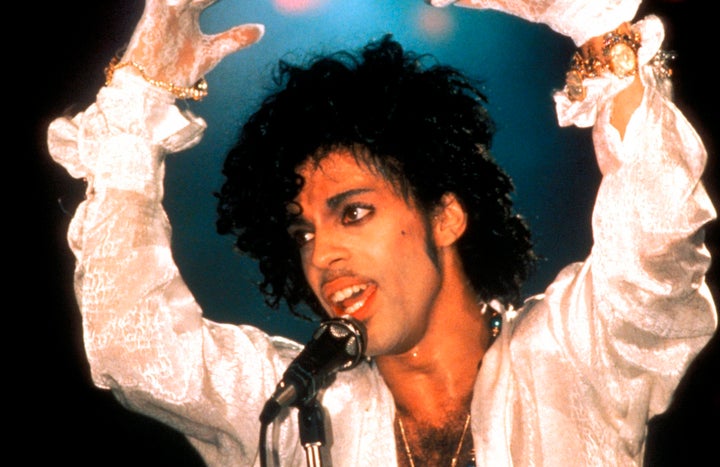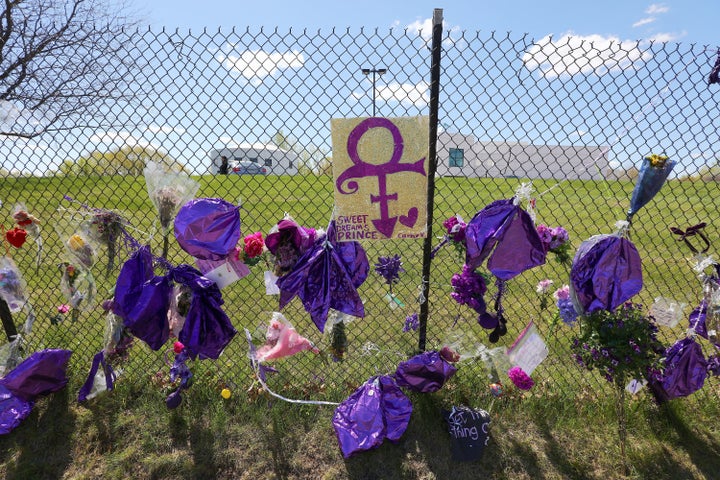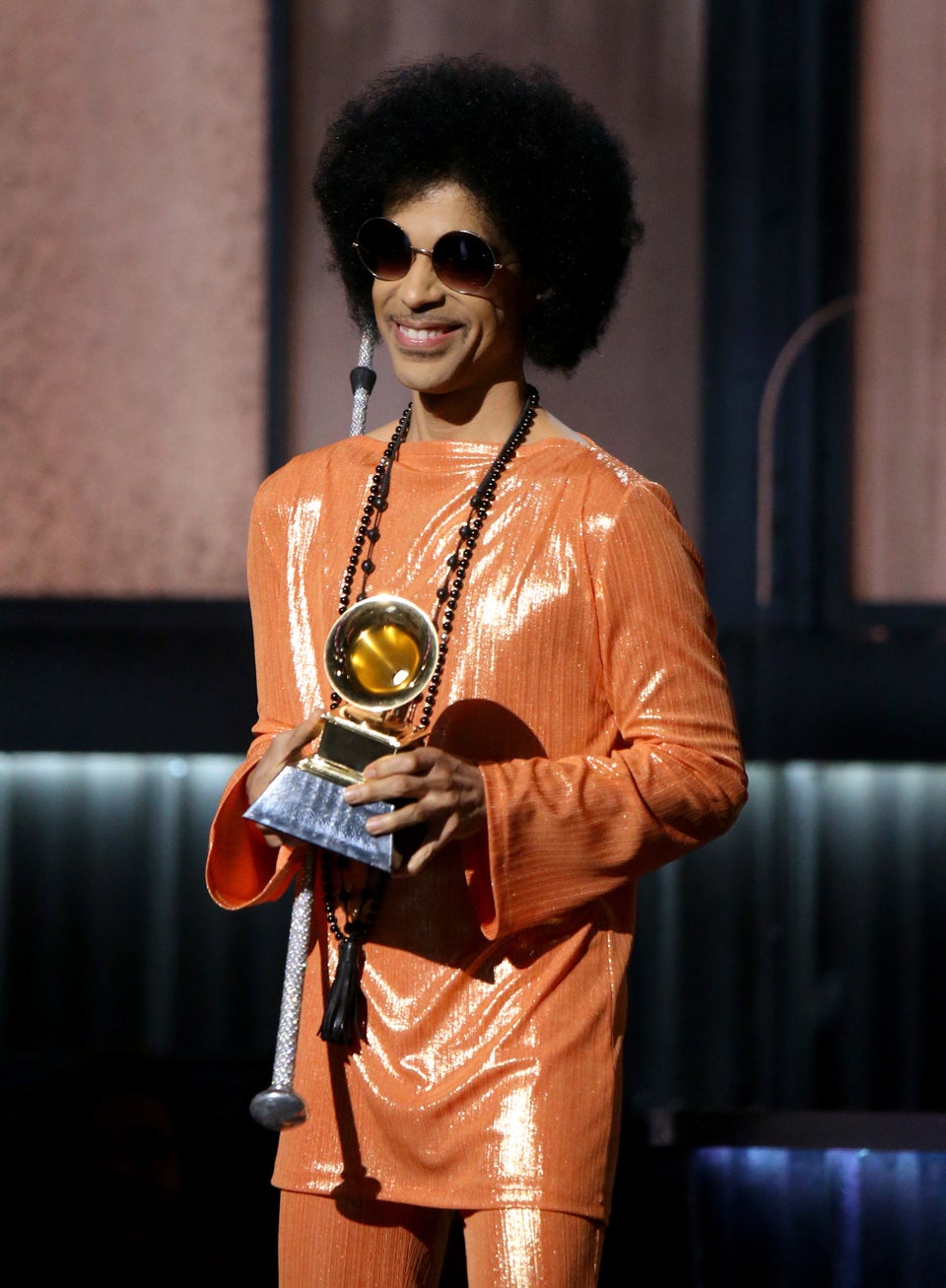
Prince was wildly transgressive, yet was also a remarkably unifying icon for an entire generation, a genius not only musically but also in how he lived. He ignored every convention long before such fluidity was popular. After becoming wildly successful, he evaded many pitfalls of rock star fame – but succumbed to others, which tragically proved fatal. I recently tried to make a film about him, which alas was not to be (music permissions, the bane of many a film), but I will try to speak my piece this way.
In a nation and a music industry still segregated in so many ways, Prince was: black, multiracial, and postracial; funk, rock, pop, soul, jazz, electronic, and rap; a composer, performer, producer, actor, and entrepreneur; hedonistically pagan, obscene, vulgar, spiritual, and religious; a tolerant humanist, a straight-edge, a vegan, and an animal rights advocate; wildly exhibitionistic and obsessively private; macho, effeminate, straight, trans, drag queen, stud, pansexual, conservative, and monastic; rigorously perfectionist and utterly chaotic. He was someone of powerful, deep originality who seemingly overcame obstacles simply by ignoring them, and who pointed the way to a world and way of life beyond narrow categories and bigotry.
Prince was also, however, human. He was ultimately killed by the collision between his perfectionism and by his shame about having flaws, and by society’s hypocrisies: the pressure to appear effortlessly spectacular in performance (which destroyed his body); to use dangerously powerful drugs to manage his pain; to find structure and guidance in a cultish religion; and to never, ever show weakness. Prince’s prescription opioid addiction was enabled by his wealth, but he wasn’t alone: opioids are a major cause of premature death in America, killing 20,000 people per year, used by over four million Americans despite being highly addictive, tolerated largely because they are a very big, very profitable business.
Some Facts
Prince Rogers Nelson was born in 1958 to musician parents. He appeared multiracial, and was also small, balletic, and utterly gorgeous, traits which facilitated his later post-racial, pan-racial, multi-gender, pansexual appeal. His parents and their marriage were troubled, as was Prince’s childhood. His musical giftedness was evident early, but he dropped out of school, received little or no formal musical education, and for years remained unacquainted with many forms of music that he would later use (Western classical, jazz, Indian, African, New Age).
Prince signed his first recording contract at 17, signed a three-album contract with Warner at 18, and released his first album at 19. On that album he composed and performed all parts of all songs except one, including 27 musical instruments. His second album, Prince, went platinum before he was 20. His third album, Dirty Mind, one year later, displayed the persona that would define him: sexually explicit, and incorporating funk, new wave, R&B, and pop. But at first Prince’s effeminate, multisexual, cross-genre persona faced opposition; on tour with the Rolling Stones, he and his band were booed and even assaulted by traditional rock audiences.
During his early career, the entire Western music world was still rigidly segregated by race, gender, and sexuality as well as genre. Classical music was all-white and male-dominated, though it quietly tolerated gays; jazz was racially integrated but male-dominated except for singers, and rather homophobic; rock was all-white, all-male, and totally straight, except for a few female singers; soul, R&B, and later hip-hop and rap were all-black, all-male, and totally straight except for female singers.
The Beatles, Rolling Stones, Pink Floyd, The Doors, The Who, Grateful Dead, Led Zeppelin, U2, Queen, Crosby Stills & Nash, Aerosmith, The Beach Boys, Cream, Guns N Roses, Lynyrd Skynyrd – every single member of all of these groups was white, male, and publicly straight, although there were closeted gays among them. Many were sexist, homophobic, and sometimes overtly racist.
Beyond being personally post-racial, straight-male-female-trans, Prince’s music ignored boundaries and, most shocking of all, Prince formed bands composed of white, black, straight, kinky, gay, multiracial, and – gasp, choke – female performers, even in macho, rigidly straight-male positions. His longtime percussionist-drummer-collaborator-lover Sheila E. is part black, part Hispanic, most definitely female, and musically the equal of any drummer in any famous rock or jazz group, none of which had ever used a female drummer, much less a non-white one. And the more boundaries Prince ignored, the better his music became. His biggest band was called The Revolution – which it was.
And all of this was on full display in the 1984 album and film that took Prince from mere fame to superstardom – Purple Rain. The music is brilliant, often unclassifiable, and beautiful. The film’s plot involves an imaginary competition among bands, all of them in reality Prince’s creations, shot in a Minneapolis club where Prince often played. Prince’s character The Kid has the winning band, and it is completely integrated, as is the film. The Kid’s girlfriend is white. The climactic song within the film is one composed by two kinky white girls, a song The Kid initially ignores but eventually uses – Purple Rain. The audiences in the club are totally mixed, including straight white boys, who appear as a sweet, gently tolerated minority rather than a dominant group.

There is almost no overt sex, and the only violence is condemned within the film, mainly the domestic violence and attempted suicide of The Kid’s father, which is portrayed more tragic than evil. The Kid is both macho and effeminate, nearly cross-dressing while riding a motorcycle, living in a feminine, delicately decorated basement while aggressively, ambitiously competing and challenging an unseen but ever-present Establishment. While many characters are kinky, as are some of the song lyrics, this is portrayed as completely normal, simply part of the normal human condition. Also notably, while Prince himself is exceptionally beautiful, many of the others are merely average in appearance; the film is anti-lookist, too.
The film cost only $8 million and was made by an unknown first-time director. It grossed $68 million domestically in 1984. Prince won an Oscar for the music, and the soundtrack won two Grammys and went platinum. Prince was 28 years old.
But the film also shows the seeds of Prince’s eventual, tragic destruction. In the film Prince wears high heels. He does spectacular jumps and splits that look completely effortless. They weren’t. By the early 1990s, still in his 30s, Prince was using a cane.
After Purple Rain, Prince’s pace if anything accelerated. Shortly after Purple Rain, he released one of his most brilliant albums, Sign O’ the Times, together with a stunning concert film of the same name, which Prince directed with Albert Magnolli, who had directed Purple Rain.
Then in 1990, Prince released Graffiti Bridge. Between them, Purple Rain, Sign O’ the Times and Graffiti Bridge are surely three of the most brilliant, diverse, and original albums of the late twentieth century. Prince combined multiple bands and personnel (Prince alone and with The Time, Tevin Campbell, George Clinton); genres including rock, funk, rap, soul, R&B, jazz, and blues; lyrics ranging from the spiritual to the nearly academic to the deliciously obscene; words delivered as spoken prose, rapping, singing, and chorus; and ambient sounds integrated into acoustic, electric, and electronic music.
“Prince left us an extraordinary legacy of beauty, celebration, tolerance, creativity, and universality”
Prince fought with Warner, changed his name, filed lawsuits, and wrote “slave” on his cheek. But Prince’s handling of the music business was brilliant and often generous. He encouraged and used untested musicians; he wrote songs for them and for other groups, such as Chaka Khan. He constructed his own home studio complex, used trucks as mobile studios to record concerts, formed his own distribution company, self-distributed music both conventionally and over the Internet, and correctly predicted the decimation of the music industry by the Internet and piracy. He was aggressive in enforcing his copyrights, angering the Electronic Frontier Foundation but delighting other musicians. All the while he composed, recorded, and performed at a furious pace, even though most of his music remained locked in The Vault. In 2014, after 18 years, he signed with Warner again.
Prince was sexually attracted principally to women, and he had no trouble attracting them. He was romantically involved with an array of beautiful, often gifted, sometimes very young women, as well as some famous ones. Ideologically, Prince was a largely anti-political humanist, pacifist, and believer in animal rights. In various songs and writings he denounced gun violence, police killings of unarmed blacks, nuclear weapons, drugs, capitalism, war, and cruelty to animals. He became a vegan. He prohibited his band members from using drugs, and paid for them to enter rehab if they became addicted. He was intensely private, and rarely appeared in public or made public statements unless somehow connected to his music.
However, Prince quietly supported causes that provided help to the vulnerable. He donated time, songs, and money to organizations devoted to animal rights (PETA) and to providing opportunity or safety to the disenfranchised (YesWeCode, Rebuild the Dream, Black Lives Matter). Prince was very quiet about most of this, as a result of his religious beliefs and desire for privacy.
Prince escaped and/or rejected many traps of wealth and fame. He often walked around Minneapolis, rode a bike, drove his own car, went shopping, and went to clubs without the usual entourage. He didn’t assault hotel desk clerks, tour Africa with the President or the UN Secretary General, become aggressively drunk in public, denounce his ex-wives in the media, get arrested, rape anyone, molest children, or become a Scientologist.
But Prince was not unscathed. He sometimes behaved strangely. He appeared on television with his then-wife speaking of their child as if still alive, when in fact he had already died. And in 2001, he fatefully became a Jehovah’s Witness, supposedly at the urging of Larry Graham, the bassist of Sly and the Family Stone. If so, Mr. Graham has much to answer for.
Jehovah’s Witnesses have some admirable tenets, but they have a very dark side; it is not publicly known whether Prince realized this. The group has 8-10 million adherents globally, run by a secretive, self-perpetuating group of “elders” headquartered in Brooklyn, New York that receives a billion dollars a year, tax-free. The group was founded in the 19 century, asserts that Jesus assumed control of Heaven on October 1, 1914, and believes that Armageddon is imminent. It predicted the end of the world several times, most recently in 1975. (It didn’t happen, despite appearances). The religion is pacifist but denies the theory of evolution, regards homosexuality as immoral, frowns on premarital sex and divorce, et cetera. And, fatally for a considerable number of people, full blood transfusions are prohibited on the grounds that blood is the essence of life in God’s eyes.

We don’t know how Prince handled this in his head. Some of his songs are religious or at least spiritual, yet he also continued to perform highly sexual music. He stated that he believed, and he attended meetings, even went door-to-door proselytizing. But his autopsy found scars on his leg and hip, consistent with surgery which would probably have required a blood transfusion. Sadly, he hid this, as he also hid his drug use.
To quote him: Even doves have pride... because Prince was in severe chronic pain from decades of jumping, dancing in high heels, and doing splits. To manage his pain, he started using, and then became addicted to, prescription synthetic opioids. These drugs are extraordinarily dangerous and highly addictive. This year, about 20,000 Americans will die from prescription opioid overdoses – more than triple the number for 2001, the year Prince became a Jehovah’s Witness, and far more than are killed by illegal heroin. These drugs have now killed more Americans than the Korean, Vietnam, Iraq, and Afghanistan wars combined.
Over 200 million opioid prescriptions are written per year in the U.S., generating pharmaceutical industry revenues of $10 billion. Medically and chemically, there is very little difference between these drugs and illegal opiates such as heroin, and in some ways prescription synthetic opioids are worse, because they are fatal in far smaller doses. Fentanyl, the drug that killed Prince, is twenty to fifty times more potent than opium or heroin, as well as being extremely addictive. As for why Fentanyl is legal while heroin is illegal – do we think money could have anything to do with it?
I hope that Prince’s estate and family can eventually become more open about what happened, to help educate the public. Prince is not the only person whose body has been destroyed by the pressure to perform perfectly. We know now that football kills slowly by causing brain damage, that many extreme athletes are crippled far too young, and that many ordinary Americans, in pain from hard physical work or accidents, turn to drugs that kill them.
But Prince left us an extraordinary legacy of beauty, celebration, tolerance, creativity, and universality – exactly the opposite of so much that we see now in the world, ranging from Donald Trump to ISIS. Prince contributed far more to the world than most famous politicians, without ever passing a single law. Long may his music and example live.

